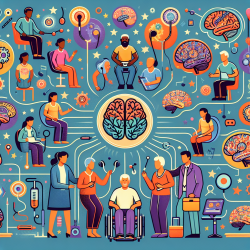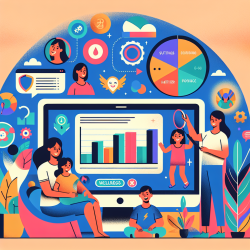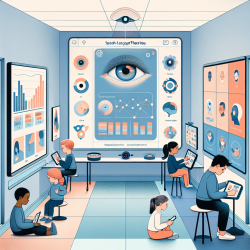Introduction
In the ever-evolving landscape of speech language pathology, the integration of cutting-edge technologies such as artificial intelligence (AI) and digitalisation presents an unprecedented opportunity to enhance therapeutic outcomes for children. The recent research article, "Deploying digitalisation and artificial intelligence in sustainable development research," sheds light on how these technologies can be harnessed to drive sustainable development across various sectors, including healthcare and education.
Harnessing AI and Digitalisation in Speech Language Pathology
AI and digitalisation are revolutionising how we approach speech language therapy, offering innovative solutions that can be tailored to meet individual needs. By leveraging AI, practitioners can develop more precise diagnostic tools and personalised therapy plans, enhancing the efficacy of interventions. Digitalisation, on the other hand, facilitates remote therapy sessions, breaking geographical barriers and ensuring continuity of care.
Data-Driven Decision Making
Incorporating AI into speech language pathology allows for data-driven decision-making. AI systems can analyse large datasets to identify patterns and trends, providing insights that inform treatment strategies. This aligns with the sustainable development goals (SDGs) by promoting equitable access to quality education and healthcare, particularly for underserved populations.
Practical Applications and Benefits
- Personalised Therapy: AI can tailor interventions based on individual progress, adapting to the unique needs of each child.
- Remote Access: Digital platforms enable therapy sessions to be conducted online, ensuring that children in remote areas receive the support they need.
- Efficiency and Accuracy: Automated tools reduce the time spent on administrative tasks, allowing practitioners to focus on delivering quality care.
Encouraging Further Research
While the integration of AI and digitalisation in speech language pathology is promising, it is crucial for practitioners to engage in ongoing research to refine these technologies. By participating in studies and sharing findings, the speech language pathology community can contribute to the development of more effective tools and methodologies.
Conclusion
The research article "Deploying digitalisation and artificial intelligence in sustainable development research" highlights the transformative potential of AI and digitalisation. By embracing these technologies, speech language pathologists can enhance therapeutic outcomes, ensuring that children receive the best possible care. For those interested in exploring this topic further, I encourage you to read the original research paper, Deploying digitalisation and artificial intelligence in sustainable development research.










